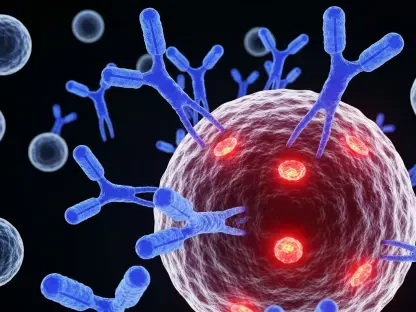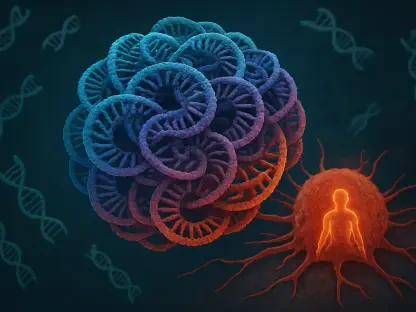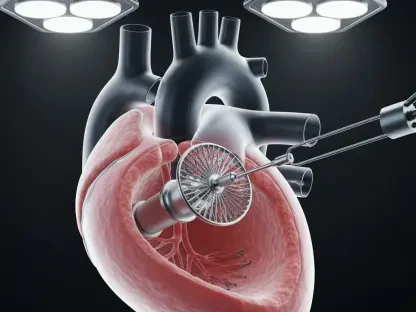Imagine a world where the devastating effects of Alzheimer’s disease can be reversed through an innovative new drug. This scenario may soon become a reality, thanks to groundbreaking research from the Centre for Addiction and Mental Health (CAMH). The study investigates the impact of GL-II-73, an experimental drug, on memory restoration and cognitive function in a mouse model of Alzheimer’s disease. With Alzheimer’s affecting nearly 50 million individuals worldwide, the implications of this research could be monumental. The study, spearheaded by Dr. Etienne Sibille and Dr. Thomas Prevot, was built on over a decade of prior research, uncovering vulnerabilities in brain pathways linked to Alzheimer’s and other cognitive disorders.
Potential for Memory Restoration in Alzheimer’s Disease
Mechanism and Target of GL-II-73
GL-II-73 operates through a unique mechanism targeting GABA receptors in the hippocampus, a brain region critical for forming and retaining memories. Current Alzheimer’s medications primarily target beta-amyloid plaques, yet their effectiveness in halting disease progression remains limited. GL-II-73, however, aims to enhance brain function and neural connections by selectively modulating GABA receptors, setting it apart from existing treatments.
In the study, Dr. Sibille and Dr. Prevot conducted experiments using both young and older mice to represent early and later stages of Alzheimer’s disease. They examined two groups: normal mice and a genetically modified cohort with beta-amyloid buildup. Initial results were promising; a single dose of GL-II-73 significantly improved memory in younger mice, completely reversing early-stage memory loss. Despite the complexities associated with chronic treatment, older mice still exhibited marked cognitive improvements, though the effects were somewhat less dramatic.
The Impact of Chronic Treatment
Chronic administration of GL-II-73 was found to yield significant benefits in the later stages of Alzheimer’s, albeit with reduced efficacy compared to early intervention. This demonstrates the drug’s ability to repair brain cell damage and restore cognitive function over time. The study’s findings on both early and prolonged treatment approaches offer valuable insights into its therapeutic potential.
A noteworthy aspect of GL-II-73 is its specificity in targeting GABA receptors, which are integral to cognitive processes. By enhancing brain function and neural connectivity, the drug shows promise not only as an Alzheimer’s treatment but also as a potential therapeutic agent for other cognitive impairments. Additionally, by focusing on a different target than current drugs, GL-II-73 may open new avenues for Alzheimer’s research and treatment development, potentially paving the way for innovative strategies to combat the disease.
Broader Applications and Future Prospects
Implications for Other Cognitive Disorders
Beyond its potential in treating Alzheimer’s disease, GL-II-73 might offer solutions for a range of other cognitive impairments, including depression, epilepsy, and schizophrenia. The drug’s unique mode of action in enhancing brain function and neural connectivity suggests it could alleviate symptoms associated with these conditions. This aspect of the research expands the drug’s applicability and underscores its broader significance within the field of cognitive health.
CAMH’s pursuit of GL-II-73’s commercial viability led to the establishment of Damona Pharmaceuticals, supported by leading venture capital firms. This move underscores the high potential observed in preclinical studies and the significant investment in progressing towards human trials. With an exceptional management team in place, Damona Pharmaceuticals aims to begin a Phase 1 clinical trial in early 2025, pending U.S. Food and Drug Administration clearance. Such trials will offer critical insights into the safety and efficacy of GL-II-73 in human populations, potentially marking a significant milestone in Alzheimer’s treatment development.
Challenges and Next Steps
Imagine a world where the devastating effects of Alzheimer’s disease can be reversed through a revolutionary new drug. This scenario might soon become reality thanks to pioneering research from the Centre for Addiction and Mental Health (CAMH). The study examines the effects of GL-II-73, an experimental drug, on memory restoration and cognitive function using a mouse model of Alzheimer’s disease. With nearly 50 million people worldwide affected by Alzheimer’s, the potential impact of this research is enormous. Leading this study, Dr. Etienne Sibille and Dr. Thomas Prevot have built upon over a decade’s worth of research uncovering weaknesses in brain pathways related to Alzheimer’s and other cognitive impairments. This innovative approach could redefine treatment options, making a significant difference in the lives of millions. The results of this study could pave the way for future clinical trials and eventually lead to a breakthrough in treating and possibly reversing Alzheimer’s disease.









